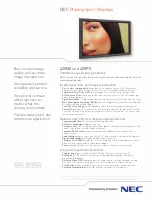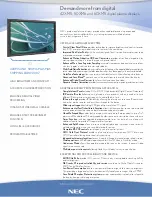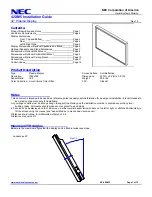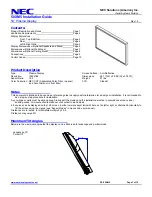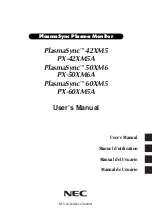
Operators
use the product for its intended function. They must be trained in electrical safety procedures and proper use of
the instrument. They must be protected from electric shock and contact with hazardous live circuits.
Maintenance personnel
perform routine procedures on the product to keep it operating, for example, setting the line volt-
age or replacing consumable materials. Maintenance procedures are described in the manual. The procedures explicitly
state if the operator may perform them. Otherwise, they should be performed only by service personnel.
Service personnel
are trained to work on live circuits, and perform safe installations and repairs of products. Only properly
trained service personnel may perform installation and service procedures.
The
symbol on an instrument indicates that the user should refer to the operating instructions located in the manual.
The
symbol on an instrument shows that it can source or measure 1000 volts or more, including the combined effect
of normal and common mode voltages. Use standard safety precautions to avoid personal contact with these voltages.
The
WARNING
heading in a manual explains dangers that might result in personal injury or death. Always read the as-
sociated information very carefully before performing the indicated procedure.
The
CAUTION
heading in a manual explains hazards that could damage the instrument. Such damage may invalidate the
warranty.
Operation
Exercise extreme caution when a shock hazard is present. Lethal voltage may be present on cable connector jacks or test
fixtures. The American National Standards Institute (ANSI) states that a shock hazard exists when voltage levels greater
than 30V RMS, 42.4V peak, or 60VDC are present.
A good safety practice is to expect that hazardous voltage is
present in any unknown circuit before measuring.
For maximum safety, do not touch the product, test cables, or any other instruments while power is applied to the circuit
under test. ALWAYS remove power from the entire test system and discharge any capacitors before: connecting or discon-
necting cables or jumpers, installing or removing switching cards, or making internal changes, such as installing or remov-
ing jumpers.
Do not touch any object that could provide a current path to the common side of the circuit under test or power line (earth)
ground. Always make measurements with dry hands while standing on a dry, insulated surface capable of withstanding the
voltage being measured.
Do not exceed the maximum signal levels of the instruments and accessories, as defined in the specifications and operating
information, and as shown on the instrument or test fixture panels, or switching card.
Chassis connections must only be used as shield connections for measuring circuits, NOT as safety earth ground connections.
If you are using a test fixture, keep the lid closed while power is applied to the device under test. Safe operation requires
the use of a lid interlock.
Maintenance and Service
Inspect the connecting cables, test leads, and jumpers for possible wear, cracks, or breaks before each use. Before perform-
ing any maintenance, disconnect the line cord and all test cables.
Cleaning
Keep the connections free of contaminants (such a dirt, oil, etc) in order to maintain maximum insulation resistance. If the
connections become contaminated, clean them thoroughly with methanol and allow them to dry completely before use.
!
2










